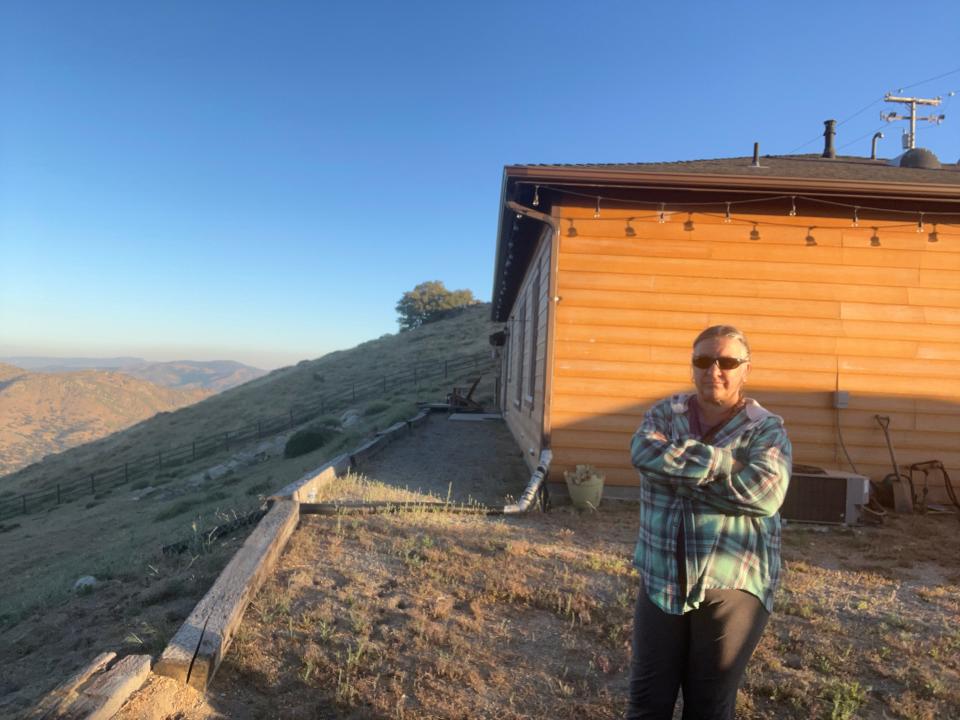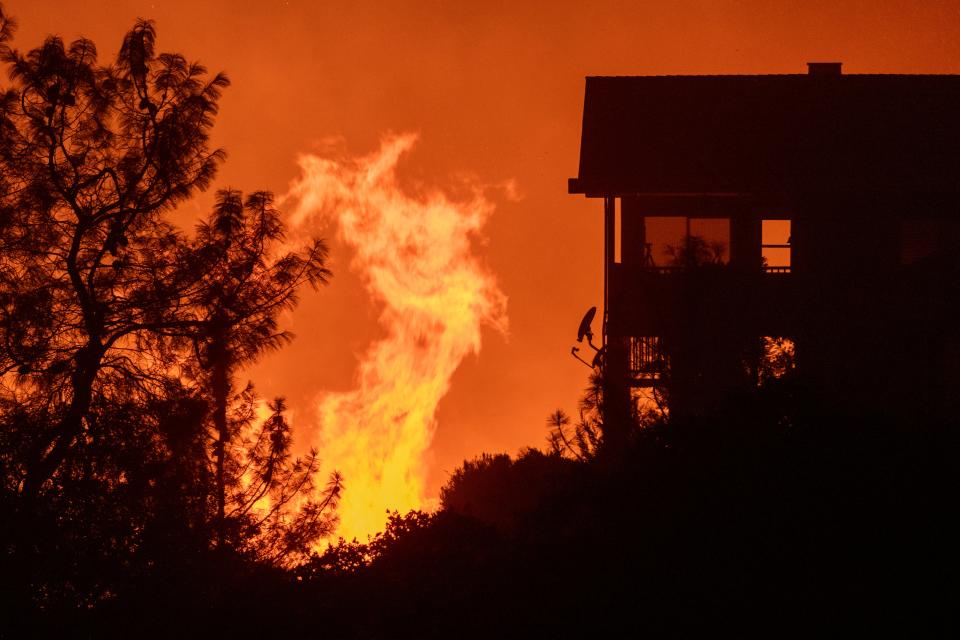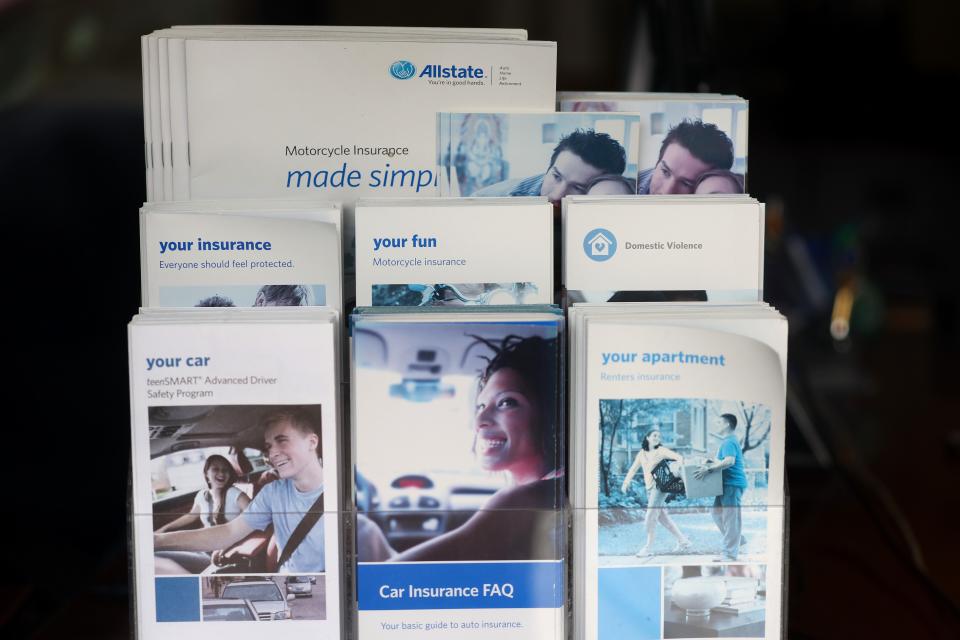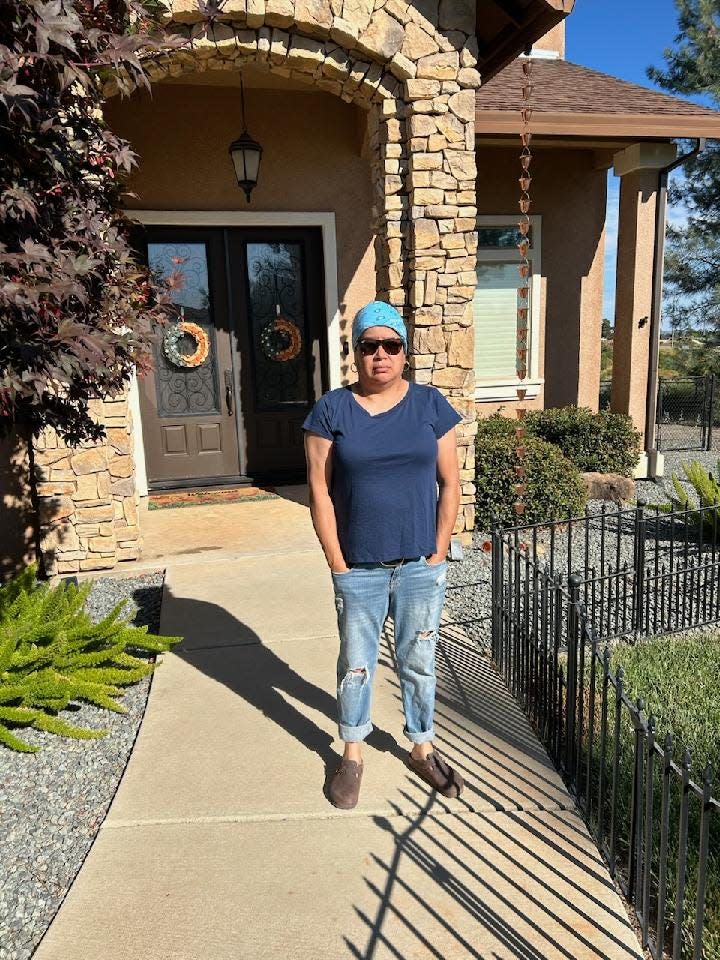As homeowner's insurance prices climb, more Americans ask: Is it worth it?
It was 2019 when Anjali Tierra decided that homeowners insurance wasn't worth the price.
The retired high school teacher, 58, took out a policy in late 2018 after purchasing a three-bedroom home nestled in the Tehachapi Mountains of southern California. She considered the insurance affordable at less than $100 a month, and the coverage brought her peace of mind while living in a “very high” fire hazard severity zone.
But the following year, when Tierra’s insurance provider sent her a renewal notice, she learned her monthly payment had jumped to $350 – more than what she was comfortable paying with the $3,500 she gets each month from her pension. She dropped the insurance policy, assuming she would find affordable coverage somewhere else.
Her search turned up empty. She's been without homeowners insurance ever since.
"Every year, usually in the springtime, I will start to do the research again," she said. "I will just randomly choose an insurance company to see if they'll cover me. And since 2019, I've been rejected by every single insurance company, large and small."

Tierra is among a growing number of American homeowners who are “going bare,” or living without homeowners insurance. A recent study from the Insurance Information Institute found 12% of Americans no longer have home insurance, up from 5% in 2019.
It’s the highest level of uninsured homeowners the industry-funded research group has seen, and follows a dramatic spike in the cost of coverage.
“It is a very concerning trend as catastrophe losses continue to escalate,” said Mark Friedlander, director of corporate communications at the Insurance Information Institute. “It is not feasible for most Americans to pay out of pocket for a significant loss to their property.”
What are the risks of not having home insurance?
Dropping insurance isn’t an option for most U.S. homeowners.
Mortgage lenders typically require proof of homeowners insurance – which covers select damages to the house, its contents and other structures on a property. Homeowners who fail to secure coverage can find their lender charging them for “force-placed insurance,” which can be twice as expensive as other insurance policies and protects the lender rather than the homeowner.
But for the roughly 40% of Americans who own their home outright, homeowners insurance may be viewed as a discretionary purchase ‒ even if industry experts say forgoing insurance often isn't worth the risk.
"You're gambling on whether your property is going to sustain a loss," said Tim Zawacki, principal research analyst for insurance at S&P Global Market Intelligence. "And when you look at things like some of these hurricane forecasts that are out there, and data regarding the frequency of severe convective storms, that's a risky bet."
That hasn't stopped some homeowners from opting to “self insure,” or set aside money to save up for out-of-pocket losses that would have gone toward a premium. Others, like Tierra, focus on mitigation efforts to prepare their homes for potential disasters.
Tierra keeps the area near her home clear of any brush and trees and has installed ember-proof vents on her roof. Still, every fire season without insurance puts her on edge.

“This is my nest egg,” she said. “I do everything I can do possibly to protect my pets and to protect my emotional welfare, but it has been emotionally draining.”
The stress levels households are experiencing around the insurance crisis is “unprecedented,” according to California consumer insurance advocate Amy Bach.
“The majority of homeowners’ net worth is tied up in their homes. You can lose most of your net worth in one severe weather event if you don’t have insurance,” she said.

Bach co-founded the consumer advocacy group United Policyholders three decades ago to counter the wealthy and powerful insurance industry. She says she knows people are getting priced out of homeowner’s insurance from her work on the ground in California.
“The premiums people are getting quoted are insane, $12,000, $18,000, $40,000. They can’t get their minds around it or their wallets,” she said.
Why has homeowners insurance gone up so much?
Insurance companies sought to raise homeowners' premiums by more than 11% last year, according to S&P Global Market Intelligence.
Analysts say insurance companies are trying to keep up with years of big losses as inflation and supply chain disruptions pushed up the costs to fix damaged homes. The Insurance Information Institute reports that insurers paid on average $1.10 for every $1 in premium they collected last year.
Is homeowners' insurance required? Why more than 6 million Americans don't have it
Then there’s climate change, which is intensifying extreme weather. The National Oceanic and Atmospheric Administration reported 28 billion-dollar disaster events last year, a new record in the inflation-adjusted data going back to 1980.
“You have all these factors combining to result in people paying a lot more for the same amount of coverage,” said Zawacki of S&P Global Market Intelligence.
He expects another double-digit rate of growth this year.
Former Federal Emergency Management Agency administrator Craig Fugate said for some mortgage-free homeowners, dropping insurance may not be a bad decision if they have large enough cash reserves. But people tend to underestimate their exposure and the cost to repair.
"It's a risky decision," he said.
Why are Americans losing home insurance?
The higher premiums are putting a strain on households already struggling to afford price increases on life’s staples, from groceries to health care to automobiles, particularly lower-income households that have depleted pandemic-era savings and are running up credit card debit and falling behind on payments.
At the greatest risk are low-income homeowners and homeowners of color who disproportionately go without homeowners insurance, research shows.
The Consumer Federation of America found homeowners who make less than $50,000 a year are twice as likely as the general population to go uninsured. The consumer advocacy group also found that 22% of Native American, 14% of Hispanic and 11% of Black homeowners have no homeowners insurance, leaving them more at risk than white homeowners.
Age is another significant factor. Older Hispanic and Black households are at higher risk of being uninsured. Older homeowners in general are more likely to leave their homes unprotected than younger ones.
“For many families around the country, their house is not only their home, but also their most valuable financial asset,” said Sharon Cornelissen, director of housing at the Consumer Federation of America. “One major storm or fire can turn an uninsured homeowner into an unhoused family or leave them to live in the wreckage of a damaged, unsafe home.”
That’s what happened to James Mercadal.
The 54-year-old inherited his two-bedroom house in New Orleans after his parents died in 2004. Mercadal had lived in the 7th Ward home his entire life, but was forced to temporarily move out after Hurricane Ida hit the city in 2021.
Mercadal said the damage was extensive. The roof, drywall and various furniture needed to be fixed or replaced, the floors had been flooded, and the home was growing mold. In all, he said roughly $38,000 worth of work was needed.
But as a person who is blind and living on a fixed income, Mercadal couldn’t afford the monthly insurance – let alone the repairs.
“I’m interested in getting the insurance (now),” he said. “But with my income being at $900 a month, I don’t think I will be able to afford it.”
Mercadal has received assistance from the disaster relief organization SBP. Now, after a short stint in Houston after the hurricane, he’s back in his home.
In what states is it hard to get homeowners insurance?
Cornelissen of the Consumer Federation of America said this is a nationwide crisis in the making. Higher-risk areas may face higher costs first, but the rest of the country won’t be far behind.
Yes, coastal disasters hurricanes and wildfires are affecting a growing number of people on the coasts. The U.S. Fire Administration estimates that more than 46 million homes valued at $1.3 trillion are at risk for wildfires, and the top 10 growth states in the 2020 U.S. Census were all hurricane-prone. Some insurance providers are even beginning to pull out of states like California and Florida.

But landlocked states are getting hit harder too, with thunderstorms resulting in an estimated $64 billion worth of economic losses last year – nearly double the losses in 2022, according to reinsurer Munich Reinsurance America.
“This is not an issue restricted to coastal states such as California and Florida,” Cornelissen said.
Still, people underestimate the likelihood that severe weather will affect them, according to Insurance Information Institute research.
A third of homeowners reported that they have been impacted by weather in the past five years, a 2023 survey found. Among the survey population of all homeowners, 59% believe their residence will be impacted by weather risks in the next 10 years, but 25% believe that they will never be impacted by weather risks and another 42% believe they will not be impacted in the next five years.

'I have nowhere to go'
Michelle Gradnigo is a homeowner in the fire-scarred foothill town of Paradise north of Sacramento. In 2018, the Camp Fire − the deadliest wildfire in California history − destroyed more than 90% of the homes there.
Her annual tab for homeowner’s insurance was already high – $3,531 a year – but she budgeted for it. Then in January she got her renewal in the mail. Her premium jumped 500% to $19,310. Her monthly mortgage payment doubled overnight to $8,000.
In a panic, she contacted her broker. She was told if she increased her deductible, lowered the estimated cost to rebuild and bundled her car insurance, her premium would drop by several thousand dollars. That wasn’t enough. She had to pull money out of her retirement account and take on credit card debt for a couple of months just to make the higher payments.
More money for less coverage seemed predatory to Gradnigo. Nothing had changed in the wildfire threat level to her home, she says. Most of the trees are long gone. Her home has sprinklers inside and a fire hydrant outside. She says she turned to the state insurance commissioner and to her local representative. No one would help her.

A health care administrator and retired lieutenant colonel in the Army, Gradnigo, 54, had hoped to move away with her 16-year-old son, but now she says she feels stuck. With runaway premiums and insurance companies dropping coverage for homeowners in high-risk areas, she has watched neighbors slash the asking price to sell their homes.
“If I put this house on the market and it really doesn’t sell, I will know that I have nowhere to go,” Gradnigo said. “It’s despair here. No one is helping us and no one is talking about it.”
Gradnigo dropped Farmers Insurance and purchased fire insurance through the Fair Access to Insurance Requirement plan which offers a limited policy as a last resort for California property owners unable to find affordable coverage. She supplements that coverage with a policy to cover other liabilities such as water damage or theft.
Her out-of-pocket expense is now about $12,000 a year, three times what she used to pay. In addition to the higher bill, she says she no longer has the feeling of safety she once had.
“I know it’s just an insurance company. But when you’ve grown up believing your insurance agents are the people you can trust and hearing the commercials and the jingles and then they just do that to you …” she said, trailing off.
Can I negotiate a lower insurance premium?
There are several steps homeowners can take to try to lower their homeowners insurance.
Try bundling home insurance with auto insurance or another policy such as pet or life insurance.
Raise the policy deductible, or ask if an insurance agent can help identify discounts.
Shop around for a policy as soon as you get a nonrenewal notice.
Seek out an experienced insurance broker who can access different options.
Reduce the risk of your home being damaged or destroyed in a disaster.
This article originally appeared on USA TODAY: Home insurance quotes are sky-high. More Americans are opting out

 Yahoo News
Yahoo News 